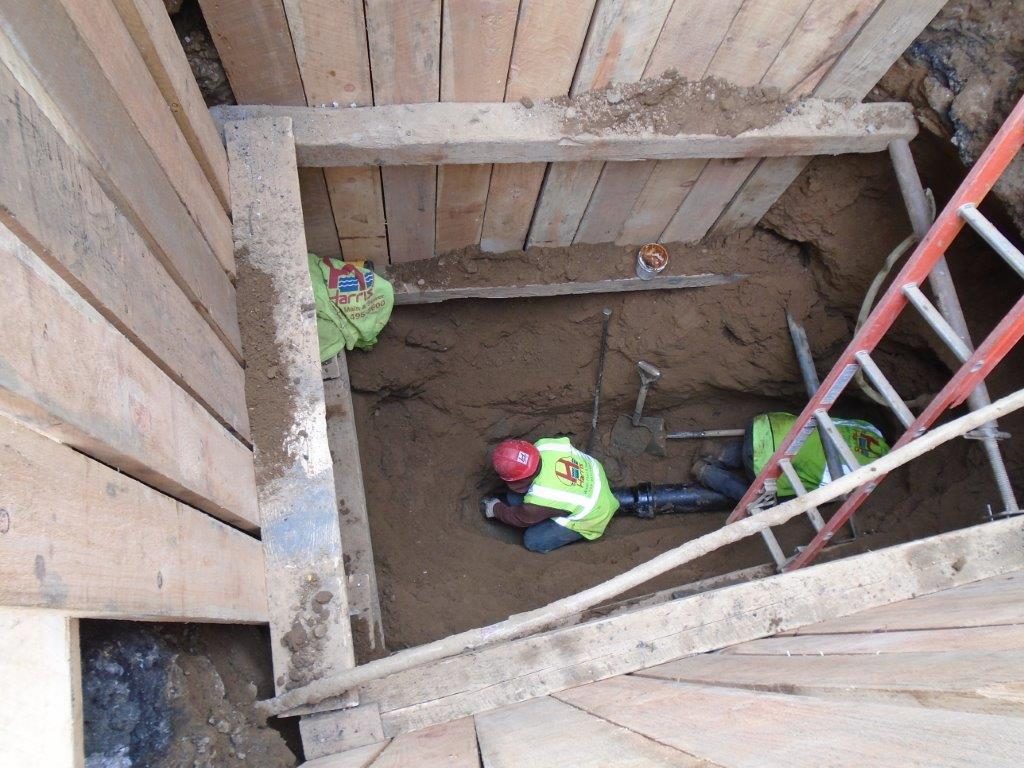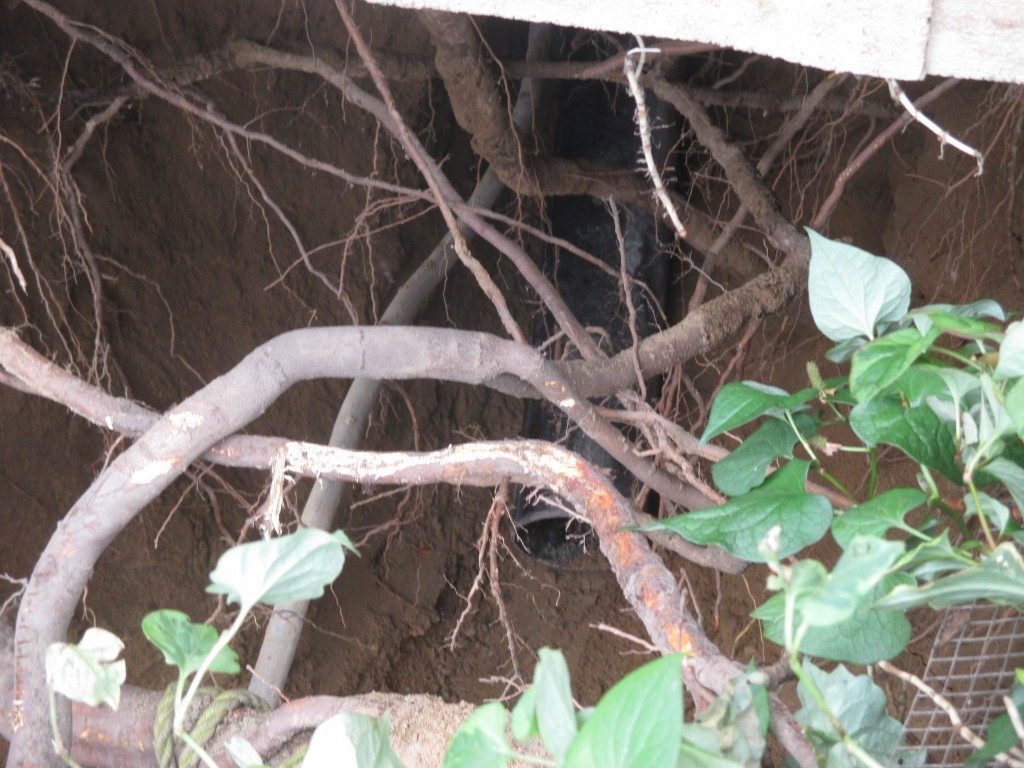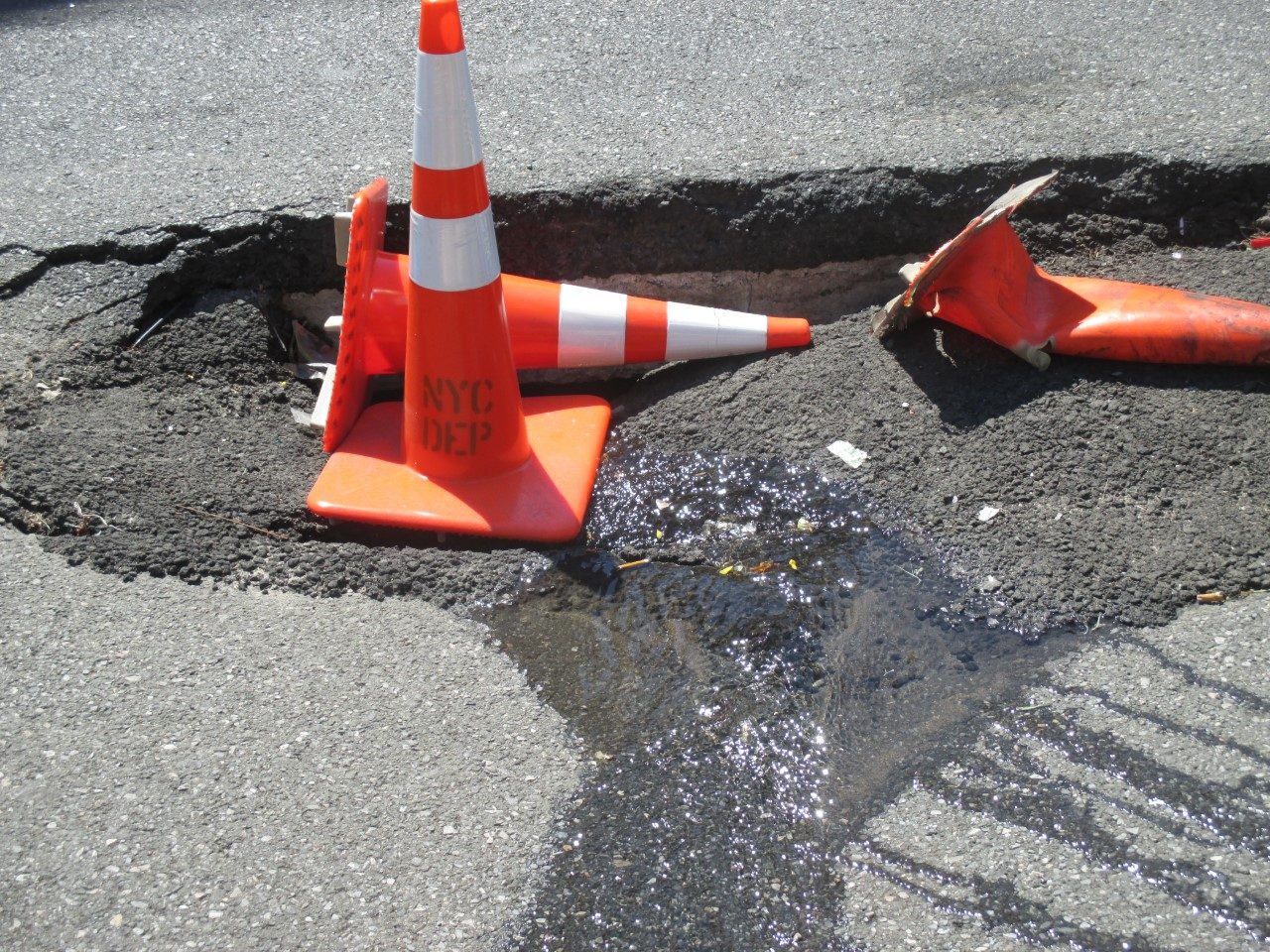It’s important for all property owners to understand how their sewer functions and what would cause a sewer backup. The first step is to understand where the sewage flows once it leaves your house. Does your sewer empty into the city sewer, a cesspool, or septic tank? Or does it exit through a private sewer line that connects to the city sewer? Once you know the connecting points of where sewage exits your house, it’s easier to determine where to look for sewer problems. There are several common types of sewer problems you may come across as a homeowner. Your next steps to clear up any issues will be determined by the level of severity and involvement needed to properly fix your sewer issues.
Potential Issues That May Lead to a Malfunctioning or Damaged Sewer
One: Root Intrusions
Root intrusion is a common occurrence when dealing with clay sewer lines, or if you have trees above where your sewer travels below ground. It easy for tree roots to grow through clay pipe and will end up crushing the pipe as the roots mature. Once the roots make any size opening, they will continue to grow through the pipe and are capable of traveling more than 50’–if allowed to grow long enough. It’s also important to understand that tree roots are attracted to the sewage flowing inside of the pipe like a magnet. Tree roots flourish off the nutrients founds inside sewage pipes. Of course, this makes things worse as it allows the roots to grow thicker and longer as time goes on.
It’s common for a property owner to hire sewer and water contractors to assist with temporary relief using a sewer snake or a water jet. It’s important to understand that this is a temporary fix and the roots will continue to grow back as time passes. If you have waited years before attempting to clear the sewer line of roots there is a good chance that your pipe has reached the point of failure and a piping replacement must be completed as a permanent resolution.
Two: Early Stages of a Broken or Collapsed Sewer Line
The start of a broken or collapsed sewer line may occur months or even years prior to any backup inside your house. The pipe may experience a hairline fracture to begin with, which will worsen as time goes on. Ultimately, the running sewage will seep through the cracks or collapsed section of the pipe and exit into the surrounding earth. At some point, the earth will become oversaturated. This will result in a backup or an undermine under your property sidewalk or roadway fronting the property.
If the broken sewer line has begun to create a sinkhole, it’s important to contact a local sewer and water contractor to perform work on an emergency basis. If the sinkhole continues to form or ends up damaging one of the neighboring properties, it’s common for the city to get involved and issue a cease and desist order for the repair of your sewer line. Avoid any violations by taing a proactive stance when facing a collapsed or broken sewer line.
Three: Misaligned Sewer Pipe
If you have a misaligned sewer pipe generally it’s due to the settling of the ground. The occurrence of ground settling depends on which part of NYC you are in. If your plumber encounters ground water when excavating for your sewer line, it’s important to take proper precautions using gravel to avoid the pipe from sinking.
If the plumber does not properly support the new pipe during a standard sewer installation, your pipe is susceptible to sagging—resulting in a misaligned pipe. It’s also important for the excavation to be backfilled and compacted properly to assist in keeping the new installation intact.
Four: Back Pitched Pipe
If you have been told that your pipes are back pitched, it may be a result of poor compaction, ground settling, or a faulty installation. When installing a sewer line, all of the pipes are supposed to be installed with pitch using a level. Each length of pipe should be measured for accuracy to avoid the possibility of a belly.
A belly is also common when the existing house piping and the city sewer do not allow for proper pitch. If the piping inside of your house is 5’ below grade and the city sewer is 5.5’ below grade, there is a good chance that the sewer installation was not completed with the proper pitch. In a case like this, the internal piping must be raised inside of the house which may result in a lot of piping internally. The other option is to raise the new sewer line entering your home and install a pump that will push the water up to the new piping. Most people want to avoid dealing with a pump as they would now be relying on an electrical device to assist the sewer in functioning properly.
Five: Blockage—Small Debris, Sanitary Wipes, or Grease
A common sewer blockage may be cleared out using a standard sewer snake. If your pipe has been clogged from paper towels or wet wipes, your drain cleaner should be able to clear the pipe in minutes. If the drain cleaner continues to hit an obstruction, a contractor may need to use a larger and more powerful snake or even a water jet to remove the blockage with more pressure.
In the case where small debris or sanitary napkins are in your pipe, the sewer line can usually still be cleared, but it may take the drain cleaner additional time and effort before clearing the pipe. Once the sewer line is cleared, it’s always suggested to complete a camera inspection for peace of mind. The hopes are that the video comes back displaying a clean and clear pipe. However, there is always a possibility that the video shows the beginning stages of a problem. It’s always good for the property owner to be aware of a potential problem to avoid a surprise if and when the sewer fails. It’s also good to understand how severe the problem is to understanding how much time they have before the sewer fails and a costly pipe repair is required.
If your sewer is blocked with grease, it may be a bit more challenging to clear the pipe. In some cases, the grease buildup has been going on for so long that it cannot be cleared, and the entire pipe must be replaced. If your sewer line is continuing to backup due to grease, it’s important to investigate the surrounding houses and determine where the grease is coming from. It’s possible that a nearby restaurant is flushing grease into the sewer that is not impacting your sewage flow.
Six: Other Risk Factors
When dealing with clay or terracotta sewer pipes it’s common to experience deterioration or corrosion of the pipe due to age. At some point all pipes will start to fail and should be replaced as a precautionary measure. For insurance purposes it should be noted as natural wear and tear which may be covered under your insurance policy.
If your sewer line exits into a septic tank, you may want to entertain the idea to connect your line into the city sewer. When running off of a septic tank there is a good deal of maintenance which can be avoided if connected to the city sewer.
If you have any questions specific to your sewer backup or type of connection it’s suggested to speak with a NYC licensed master plumber to assist in diagnosing and resolving your issue.
If you have any questions or would like to schedule an inspection, call Harris Water Main and Sewer.























